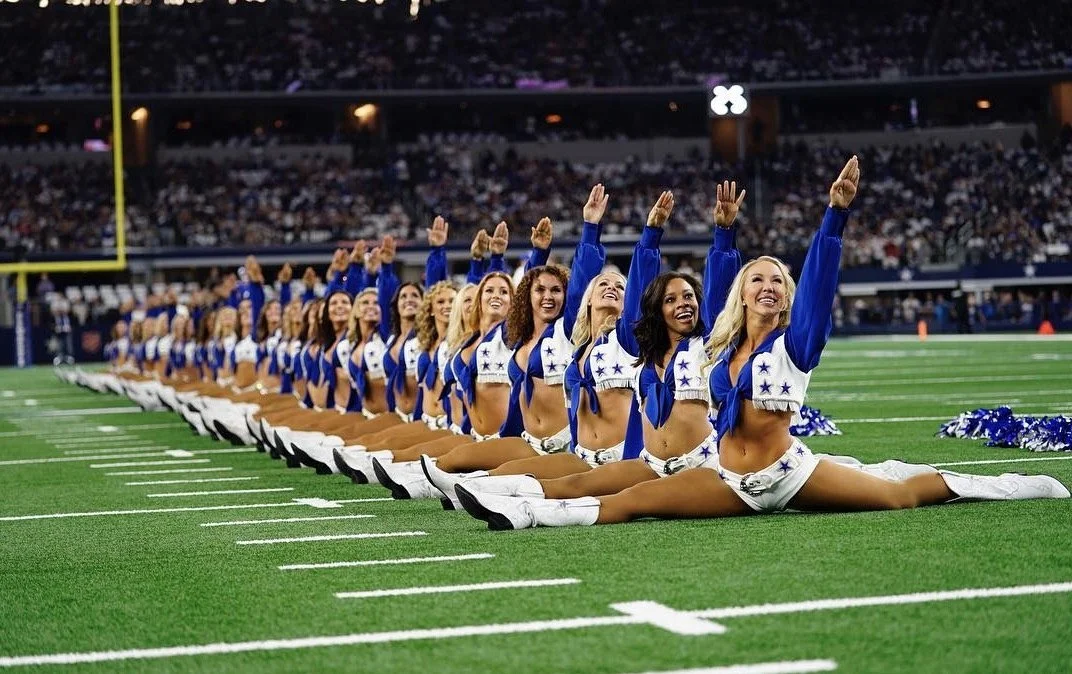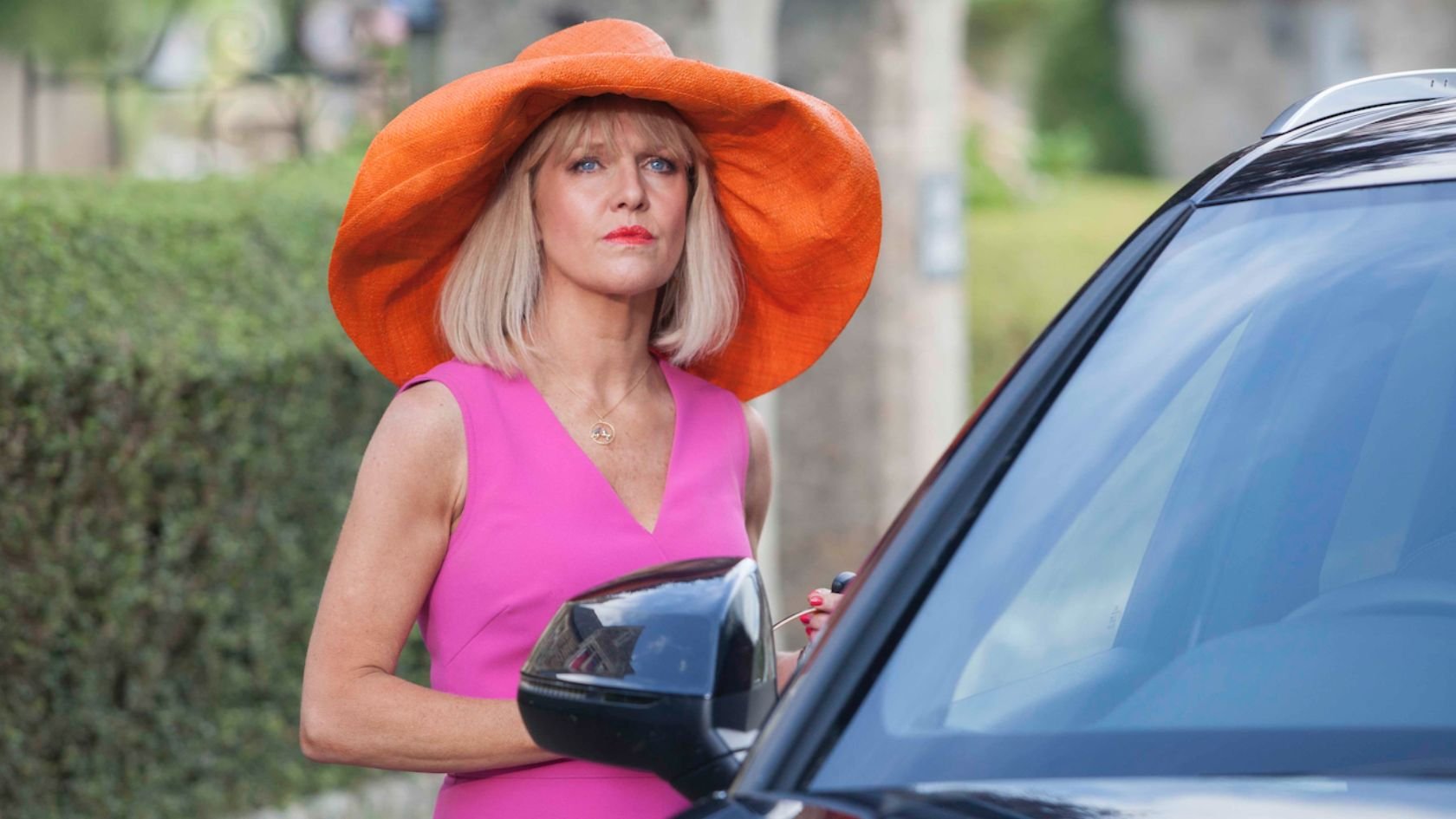What “America’s Sweethearts” Teaches Us About PR, Branding, and Protecting Your Reputation
Below are 8 essential PR lessons the Dallas Cowboys Cheerleaders teach us in their hit Netflix Series.
Table of Contents:
Legacy Doesn’t Sell Itself - Keep Evolving
Pitch Like a Human
Your Visuals are Your Story
Vulnerability is Visibility
Show Your Work, Not Just Your Win
Get Ahead of the Scandal
Master Gatekeeping
It’s Not the Pitch, It’s the Perception
The Netflix docuseries America’s Sweethearts: Dallas Cowboys Cheerleaders is more than a glossy binge-watch filled with rhinestones, high-kicks, and Texas sunsets. For brand founders and marketers, it’s a masterclass in modern PR, and a shining example of how to build, protect, and elevate a legacy in real-time.
Behind every perfect ponytail and photo-op is a strategic communications machine that has kept the DCC relevant for decades. Whether you're leading a lifestyle brand, running a founder-led business, or trying to turn your mission into media moments, here are the PR lessons we can take from the sidelines straight into the boardroom.
1. Legacy Doesn’t Sell Itself: You Have to Keep Earning It
The Dallas Cowboys Cheerleaders are an American institution. But even with decades of cultural clout, every single dancer must re-audition every year. There’s no automatic in. No coasting on legacy. Every moment is earned.
That’s not about performance, it’s about perception.
The PR takeaway? Having history doesn’t mean having headlines. Editors, customers, and audiences don’t care how long you’ve been around unless you’re making your relevance obvious right now. Brands, just like cheerleaders, have to keep evolving, keep showing up, and keep earning their spot in the spotlight.
2. Pitch Like a Human, Not a Brand
Two of the most powerful moments in the series come when Kelli Finglass, the DCC Director, personally invites Dolly Parton to participate in the Halftime Show for the Thanksgiving Day game. But this isn’t your average PR outreach - it’s intimate, emotionally intelligent, and tailored.
When Dolly Parton accepted and came to perform, Kelli Finglass didn’t just roll out a red carpet, she curated a full-blown Texas love letter in Parton’s dressing room. Drawing from Parton’s autobiography, Finglass placed delicate pokeberries that Parton used as blush and lipstick at the beginning of her career, and other meaningful keepsakes that demonstrated care and focus. Everything was chosen with intention, not just aesthetics. It wasn’t just about impressing Dolly, it was about honoring her story, her roots, and her unmistakable magic. She tapped into Parton’s values, celebrated her roots, and made her feel seen.
The PR lesson? Personalization wins. Every time. A great pitch doesn’t start with “let me tell you about my product,” it starts with why them. Do your research. Connect the dots. Show up like a thoughtful collaborator, not a cold email.
3. Your Visuals Are Your Story
Every shot in the series, from training camp to game day, is impeccably styled. The hair. The boots. The lighting. It’s all intentional. The result? You’re not just seeing cheerleaders. You’re seeing a brand image that’s been honed for decades.
In a cultural moment where objectification is being called out, and rightly so, you might expect the Dallas Cowboys Cheerleaders (DCC) to feel like a relic of the past. After all, we’re talking about full-glam, tiny uniforms, long legs, and literal pom-poms.
But what’s fascinating about America’s Sweethearts is how it reframes the narrative.
The DCC doesn’t run from its glamorous image - it reclaims it. And therein lies the PR brilliance.
They Don’t Pretend It’s Not Sexy - They Reframe What Sexy Means
Yes, the uniform is iconic. Yes, it shows skin. But what the show drives home is that the women choose this. They train for it. They earn it. They take pride in it. The performance isn’t about pleasing men, it’s about excellence, artistry, athleticism, and legacy.
The DCC’s signature move involves tightly choreographed sky-high kicks, a leap in the air, followed by an awe-inspiring landing in a full split.
It’s not “sexy for you.” It’s “sexy, because I own it.”
That shift from object to agent is subtle but powerful and incredibly important in branding.
They Center Skill, Not Seduction
The docuseries spends far more time showing the sweat, strain, and skill behind every move than it does lingering on slow-motion booty shots. These women are elite athletes. Period. (I couldn’t help thinking as I watched their rehearsals that there should be a cheerleading event in the Olympics.)
There’s an emphasis on discipline, work ethic, and inner strength that completely reframes the experience for the viewer. Instead of consuming beauty, you respect it.
PR takeaway? The more you show the work, the less likely the audience is to reduce it to the aesthetic.
They Allow Space for Self-Awareness, and Critique
The show doesn’t dodge the tension. It acknowledges it. The dancers themselves discuss the complexities of being a “modern woman” in a “legacy brand.” That self-awareness actually earns more respect from viewers.
Today’s audiences don’t expect perfection: they expect transparency. The DCC brand survives (and even thrives) in this cultural moment not by ignoring the critique, but by owning the conversation.
They Champion Empowerment, Not Exploitation
The dancers’ own words are powerful: they describe the experience as life-changing, affirming, and empowering. For many of them, being on the team isn’t about becoming eye candy - it’s about building confidence, friendships, and careers.
When the people within your brand feel empowered, not exploited, that shows. And that authenticity resonates far beyond the press release.
Beauty Isn’t the Problem: Erasure Is
The DCC doesn’t apologize for being beautiful, glamorous, or high-gloss. And they shouldn’t. The key is that they let the humanity of each woman shine through. They lead with identity, not objectification. With story, not stereotype.
That’s how you evolve a legacy brand in a new era: not by erasing its past, but by reclaiming its purpose.
If you’re a founder, hear this loud and clear: Visuals speak before your words do. Whether it's your Instagram grid, your website photography, or even how you show up in a press kit, every image is a trust-builder or a dealbreaker.
Think of it like this: if you want to be featured in Vogue, your brand has to look like it belongs in Vogue.
4. Vulnerability Is Visibility
We watch dancers battle injuries, body image struggles, imposter syndrome, and heartbreak. And that’s what keeps us glued to the screen, not the performances, but the people.
Brands often shy away from showing the messy middle. But the messy middle? That’s where the magic lives.
For PR purposes, your founder story is your biggest untapped asset. What motivated you to start? What did you overcome? Why does this matter to you? Editors and audiences alike crave authenticity, so let them in.
5. Let People See the Work, Not Just the Win
Some of the most emotional moments in the series happen off the field: the long rehearsals, the hard critiques, the personal sacrifices. It’s the behind-the-scenes effort that earns our admiration.
That’s the content your brand is probably forgetting to show.
We don’t just want to see your product launch - we want to see the prototypes, the late-night packing sessions, the teary moments when you almost quit. Sharing your process builds intimacy. And intimacy builds trust.
6. Get Ahead of the Scandal, or It’ll Get Ahead of You
When cheerleader Chandi Dayle is accused of breaking a team rule by bringing a man back to her hotel room, the DCC leadership doesn’t ignore it or spin it. They address it head-on. They investigate. They communicate clearly. And they make a decision with cameras rolling.
This is textbook crisis management: calm, factual, timely.
As a brand, you won’t always avoid controversy. But you can control your response. Be transparent. Be prompt. Be clear. Don’t let social media or public speculation shape your narrative before you do.
👉 An example of a brand NOT getting ahead of PR disaster was outlined in another Netflix documentary: Poop Cruise.
In February 2013, an engine room fire aboard the Carnival Triumph disabled the ship’s propulsion and power systems. This meant no electricity, limited food, overflowing toilets, and over 4,000 passengers stuck at sea for five days in what quickly turned into a floating biohazard.
Thanks to the magic of smartphones passengers started posting videos, photos, and firsthand horror stories in real time. CNN picked it up. Twitter exploded. And “Poop Cruise” was born.
Did Carnival Get Ahead of the Story? Not even close. In fact, Carnival’s initial response was:
Slow
Corporate-sounding
And overly optimistic (bordering on delusional)
They issued vague statements about “technical difficulties” while social media was already filled with images of passengers sleeping in tented hallways and raw sewage flowing down corridors. The contrast between reality and PR messaging made Carnival seem disconnected and untrustworthy. In 2013, Facebook, Twitter, and YouTube were already huge, but most brands and many PR firms were still treating social media like an add-on, not a frontline communications tool. TikTok didn’t exist, Instagram was still mostly filtered brunch pics, and crisis comms playbooks were largely stuck in the “issue a press release and hope for the best” era. So when passengers trapped on the Triumph started tweeting, Instagramming, and texting news outlets from the ship, it caught Carnival, and their PR team, flat-footed.
The Carnival PR Firm Missed the Power Shift
This was the moment when passengers became the media. Their real-time updates painted a vivid (and horrifying) picture that traditional press couldn’t match in immediacy or authenticity. The PR firm didn’t expect viral videos of sewage-soaked carpets and “poop bags” to dominate the narrative before any official statement was ready.
That miscalculation turned what could have been a bad situation into a reputational disaster.
In the case of Chandi Dayle, the Dallas Cowboys Cheerleaders didn’t downplay or gloss over the situation. Though the stakes weren’t globally significant like a corporate scandal and thousands of people stranded on a ship, the team still recognized the real-world weight of how fast social media can amplify a narrative, even one rooted in rumor. Rather than bury the incident, the DCC chose transparency. They had candid, on-camera conversations, acknowledged the complexity, and let the audience witness the decision-making process in real time.
The PR takeaway? Just because something isn’t “front-page news” doesn’t mean it’s not reputationally important. In today’s digital landscape, every story has the potential to go viral. Choosing openness over silence, even for internal matters, can be the difference between protecting your brand and losing control of your narrative.
Expect the Hashtag Before the Headline!
7. Gatekeeping Isn’t a Dirty Word
Kelli Finglass is many things: poised, polished, and unshakably protective of the brand. She doesn’t let everyone in. She doesn’t say yes to everything. She sets the standard and then holds the line.
And that’s part of why the DCC brand has endured for so long.
As a founder, you need boundaries, too. You don’t have to say yes to every collab, every store, or every influencer who slides into your DMs. That boutique that wants your candles but won’t honor your pricing? That influencer who’s off-brand but has a big following? That podcast that doesn’t align with your values?
You see this clearly when former cheerleaders or outsiders try to return or align themselves with the DCC without going through proper channels. Kelli’s response is always the same: respect the process, or you’re not part of the brand. Whether it’s a veteran dancer hoping for special treatment or a third-party trying to partner without alignment, Kelli’s answer is consistent: if it doesn’t serve the DCC standard, it’s a no.
You can, and should, say no.
Protect your aesthetic. Protect your voice. Protect your values. Not every opportunity is a good one. And not every person should speak for your brand.
Because brand dilution happens slowly, one compromised “yes” at a time.
Kelli Finglass doesn’t let just anyone wear the uniform. And as a skincare or candle brand founder, you shouldn’t let just anyone carry your banner, either.
Let’s say a fast-fashion retailer reaches out and they want to carry your calming facial mist or signature scent in bulk, but the vibe is off. Their shelves are cluttered with mass-market, chemically harsh formulas that don’t align with your clean, clinically-backed positioning. The order is tempting… but you know your product will get lost (or worse, look cheap).
Or maybe a mega-influencer wants to collab, but her content is chaotic, unvetted, and one TikTok away from controversy. Sure, she has reach. But is she on-brand? Does she reflect your values of gentle, effective skincare and thoughtful transparency?
These are your “Kelli Finglass moments.”
You don’t say yes to every opportunity. You don’t dilute the story just for scale. Like Kelli, you guard the gate because brand equity is built through discernment. That’s how legacy brands are made.
So whether it’s an influencer, a retailer, or even a trending ingredient you’re being pushed to use, if it doesn’t match your standards, say no. Firmly. Graciously. Strategically.
Because skincare might live in the beauty aisle, but your brand? It lives in every decision you make.
8. PR Isn’t Just What You Pitch: It’s What People Perceive
What really makes America’s Sweethearts resonate is how it captures the micro-moments: a dancer comforting her teammate. A knowing glance. A respectful disagreement. These are the things that shape public opinion far more than the official soundbites.
Translation? PR lives in every touchpoint. Every customer email, every DM reply, every post caption, every founder interview: it all adds up. The question is: Are you building a brand people trust, or just a product people buy?
Final Thoughts: Build Your Brand Like a Cheer Team
America’s Sweethearts is more than entertainment. It’s a blueprint for branding that’s resilient, refined, and relentlessly human. If you’re a founder, here’s what to steal from the DCC playbook:
Keep evolving your story: even if you’re a legacy.
Personalize every pitch like it’s going to Dolly.
Curate visuals that earn attention.
Don’t fear emotion, it’s your storytelling superpower.
Show the work. Own the slip-ups. Protect the vibe.
Because the best brands? They don’t just sell. They sparkle with substance.
Want help crafting a PR strategy that goes beyond glitter?
✨ I work with founders to build brands that get seen, remembered, and talked about. If you’re ready to turn your founder story into a media-ready moment, let’s chat.
PR Strategy, Branding, Founders, Reputation Management, Netflix, Pop Culture Case Studies, Crisis Comms, Female Leadership, Personal Branding











